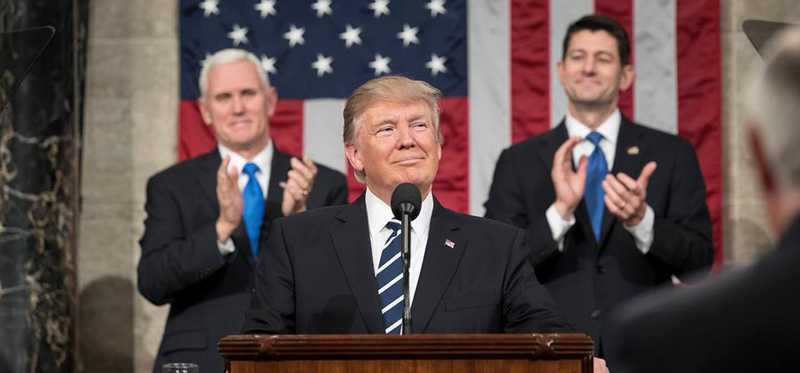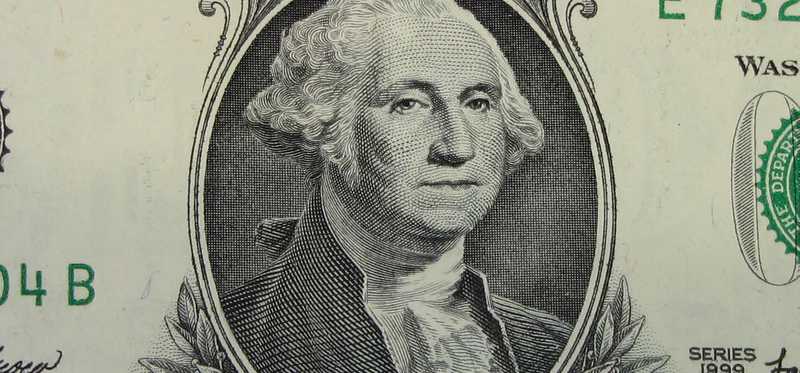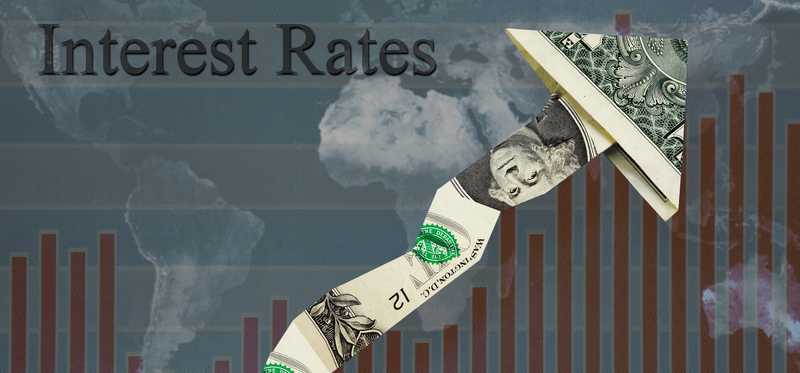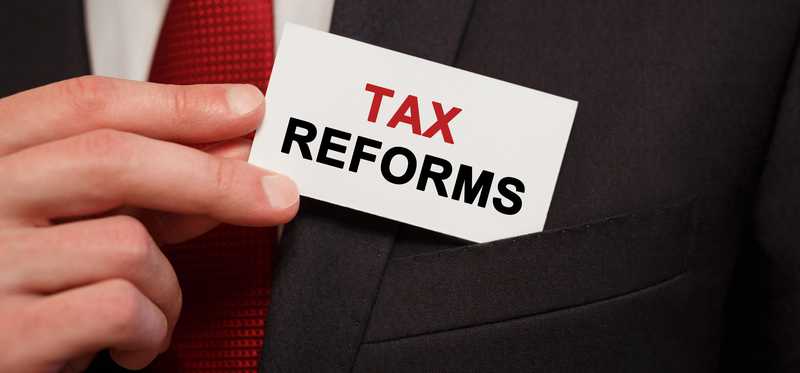9 Ways the U.S. Economy Has Changed in Trump's First Year

9 Ways the U.S. Economy Has Changed in Trump's First Year
The effects are beginning to take shape
A little over a year ago, on Jan. 20, 2017, Donald J. Trump was sworn in by Chief Justice John Roberts and became the 45th president of the United States.
He was an unlikely candidate from the get-go given that he had no political experience and had never served in the military. All 44 of the previous presidents had leaned on either political experience or a military acumen before entering the Oval Office. But, Trump brought neither. Instead, voters stood behind Trump with the expectation that he would use his keen business sense and disassociation with a life in politics to his advantage once in office. Now, roughly one year later, we stand on the eve of President Trump’s first State of the Union address.
Over this past year, quite a bit has changed with the U.S. economy. From broad-market growth indicators, to corporate profits and worker paychecks, the effects of the Trump presidency are taking shape. Here are nine ways the U.S. economy has been shaped by Trump’s first year in office.
Previous
Next

1. The stock market has soared to an all-time record high
Perhaps the biggest impact of Trump’s presidency, and one that the president himself has touted on numerous occasions, is the stock market heading to one new high after another. Admittedly, we’re in the midst of an incredible bull market that’s nearly nine years old, so this optimism certainly pre-dates the Trump presidency. Nonetheless, since Election Day (Nov. 8, 2016) and through Jan. 24, 2018, the broad-based S&P 500 (INDEX: GSPC) has risen by 33%, and it’s up 25% since Trump took office on Jan. 20, 2017. For added context, the stock market has historically gained 7% a year, inclusive of dividend reinvestment, and adjusted for inflation. Therefore, the “Trump rally” is crushing historic measures so far.
Why the bullishness? Trump touted industry deregulation and tax cuts during his campaign, leading Wall Street and investors to believe that the pro-business environment he’d bring to the table would translate into greater profits for corporations and gains for shareholders. Thus far that thinking has proved correct.
ALSO READ: 5 Things to Do With the Stock Market at a New All-Time High
Previous
Next

2. The unemployment rate is at a 17-year low
The Trump presidency has also ushered in the lowest unemployment rate we’ve seen since Dec. 2000. Since taking office in Jan. 2017, the unemployment rate has fallen from 4.8% to 4.1%, where it’s remained for each of the past three months. Expectations of corporate tax reform, which came to fruition in December and will be discussed in a bit, along with relatively low lending rates compared to historic norms, have been instrumental in encouraging businesses to hire and expand.
But Trump doesn’t get all the credit here. The unemployment rate has been steadily falling since Oct. 2009, with actions taken by the Obama administration and Federal Reserve playing a critical role in stabilizing the U.S. economy and job market following the Great Recession. Additionally, labor force participation is near a 40-year low at 62.7% as of Dec. 2017. Therefore, even with modest jobs growth, the unemployment rate has been able to push lower.
Previous
Next

3. GDP growth is at a more than two-year high
The Trump presidency has also ushered in a stronger overall growth rate for the U.S. economy. Gross Domestic Product (GDP) jumped by 3.1% in the second quarter and 3.2% in the third quarter, with the latter reading representing the fastest GDP growth rate since the first quarter of 2015. It’s also the first time GDP growth has topped 3% in two consecutive quarters since the second and third quarters of 2014.
However, it’s also hard to figure out exactly how much of this is specifically attributable to Trump. While the expectations of corporate and individual tax reform, along with industry deregulation, probably encouraged some increase in spending and helped GDP growth, the administration didn’t pass any significant laws until the Tax Cuts and Jobs Act in December. In other words, the jury is still out on what direct impact Trump’s policies will have on GDP over the next one-to-three years.
Previous
Next

4. The U.S dollar has fallen to a three-year low
The greenback has taken a big hit since Trump took office, with the U.S. Dollar Index recently hitting a three-year low. In doing so, it makes exported U.S. goods more attractive to foreign countries, while making it more expensive for American companies to import foreign goods.
Why has the U.S. dollar been taken to the woodshed since Trump took office? First, it could be argued that Trump’s lack of political experience has come into play. His dealings with North Korea have occasionally spooked the financial markets, pushing the greenback lower.
Secondly, the Trump administration struggled to pass major legislation during its first year. Despite numerous attempts to repeal and replace the Affordable Care Act (better known as Obamacare), the law remains in place. This inability to translate Trump’s agenda into law has weighed on the dollar.
Lastly, both Trump and Treasury Secretary Steven Mnuchin have favored a weaker dollar. A weak dollar drives exports, which Trump believes will help lower the United States’ trade deficit with foreign nations.
Previous
Next

5. The trade deficit has worsened, considerably
Interestingly enough, though, the U.S. trade deficit has actually widened under the Trump presidency, even with a falling dollar.
Earlier this month, the Commerce Department reported that the November 2017 trade deficit of $50.5 billion was the largest monthly imbalance in nearly six years. Though exports did expand 2.3%, imports have been climbing at an even faster pace. Perhaps most notable was the fact that the $35.4 billion trade deficit to China in November represents a more than two-year high. Through November, the $513.6 billion in monthly deficits was 11.6% higher than at the same period in 2016.
For his part, President Trump blames bad trade deals as being responsible for this growing trade deficit. However, some economists suggest that an increase in consumers’ spending, in lieu of lower unemployment and faster GDP growth, could be responsible for the recent uptick in the trade deficit.
ALSO READ: Big Winners From President Trump's Trade Mission to China
Previous
Next

6. Loans have become more expensive
In case you haven’t been paying attention, it’s also become costlier to borrow money under the Trump administration. Since taking office, the Federal Reserve continued its monetary tightening policy and raised its federal funds target rate by 25 basis points (0.25%) on three separate occasions (March, June, and December). Though the Fed doesn’t directly control interest rates, its federal funds target rate is a leading indicator for a number of interest-sensitive products, such as credit cards and bank loans.
Despite the national inflation rate remaining tame, steady expansion in the U.S. economy has been the impetus behind the Fed’s continued monetary tightening. It’s expected that the Fed will increase its federal funds target rate by a quarter-point on three separate occasions for a second year in a row in 2018.
Previous
Next

7. Corporations are pocketing more of their profits
The aforementioned passage of the Tax Cuts and Jobs Act was months in the making, but it also represents the biggest overhaul of the U.S. tax code in more than three decades.
Corporations entered the Trump presidency with the prospect of facing a peak marginal income-tax rate of up to 35%, which is among the highest in the world. But following the passage of the Tax Cuts and Jobs Act, and as of Jan. 1, 2018, they now face a permanent peak income-tax rate of just 21%. President Trump believes that this lower tax rate will allow companies to hire, boost wages, and reinvest within America.
Though the jury is still out on the long-term impacts of corporate tax cuts, quite a few brand-name businesses have announced bonuses or wage increases following the passage of this law. This past week, JPMorgan Chase (NYSE: JPM), the largest bank in the U.S. by assets, announced that it would be spending $20 billion to increase the hourly pay of its employees as part of a “long-term, sustainable investment” in the economy. Meanwhile, retail giant Wal-Mart (NYSE: WMT) announced on Jan. 11 that it would increase the starting wage of hourly employees to $11, expand maternity and parental leave benefits, and provide a one-time cash bonus to eligible associates of up to $1,000.
ALSO READ: Here's Who Got the Biggest Tax Rate Break From Corporate Tax Reform
Previous
Next

8. Workers are likely seeing a boost in their paychecks
In addition to corporate tax reform, the Tax Cuts and Jobs Act made significant changes to the individual tax code. Though the seven progressive ordinary income-tax tiers remain, the income amounts that correspond to those tiers have widened, or the effective tax rate itself has dropped, for most working Americans.
And that’s not all. The new tax law removed a number of credits and deductions in an effort to simplify the tax code and preparation process. In response, Americans will find that their standard deduction has nearly doubled to $12,000 for single filers and $24,000 for couples who are married and filing jointly. The Child Tax Credit was also increased under the Tax Cuts and Jobs Act in an effort to help out middle-class families. The end result should be that most working Americans see a boost in their paychecks, beginning in 2018.
Previous
Next

9. 3.2 million more people are now uninsured compared to the previous year
Finally, the Trump presidency has seen marked changes to Obamacare. Despite multiple unsuccessful attempts to repeal and replace the Affordable Care Act, President Trump has still been able to make changes to the health law of the land. These changes have resulted in 3.2 million more people being uninsured at the end of 2017, relative to the end of 2016, according to recently released data from Gallup and Sharecare.
First, Trump dropped a long-standing appeal regarding cost-sharing reductions (CSR). CSRs are used by low-income families to help cover the costs of copays, coinsurance, and deductibles associated with a doctor’s visit. In 2014, the GOP sued over what it believed were inappropriate CSR payments being made to insurers, and in 2016 won its case. However, the federal judge stayed her order given an appeal from the Obama administration – an appeal that carried over into the Trump presidency. Trump ended that appeal, and thus halted future CSR payments.The Tax Cuts and Jobs Act also repealed the individual mandate, which is the requirement that Americans purchase insurance or pay a financial penalty. Removing the individual mandate is expected to save the federal government $338 billion over 10 years as a result of having to pay out less in the way of subsidies.
The result has been significantly higher premium costs for the average American. What remains to be seen is if these higher healthcare costs spill over into the broader economy and beyond hospitals as a drag on growth in the years to come.
Sean Williams has no position in any of the stocks mentioned. The Motley Fool has no position in any of the stocks mentioned. The Motley Fool has a disclosure policy.
Previous
Next
Invest Smarter with The Motley Fool
Join Over Half a Million Premium Members Receiving…
- New Stock Picks Each Month
- Detailed Analysis of Companies
- Model Portfolios
- Live Streaming During Market Hours
- And Much More
READ MORE
HOW THE MOTLEY FOOL CAN HELP YOU
-
Premium Investing Guidance
Market beating stocks from our award-winning service
-
The Daily Upside Newsletter
Investment news and high-quality insights delivered straight to your inbox
-
Get Started Investing
You can do it. Successful investing in just a few steps
-
Win at Retirement
Secrets and strategies for the post-work life you want.
-
Find a Broker
Find the right brokerage account for you.
-
Listen to our Podcasts
Hear our experts take on stocks, the market, and how to invest.
Premium Investing Services
Invest better with The Motley Fool. Get stock recommendations, portfolio guidance, and more from The Motley Fool's premium services.